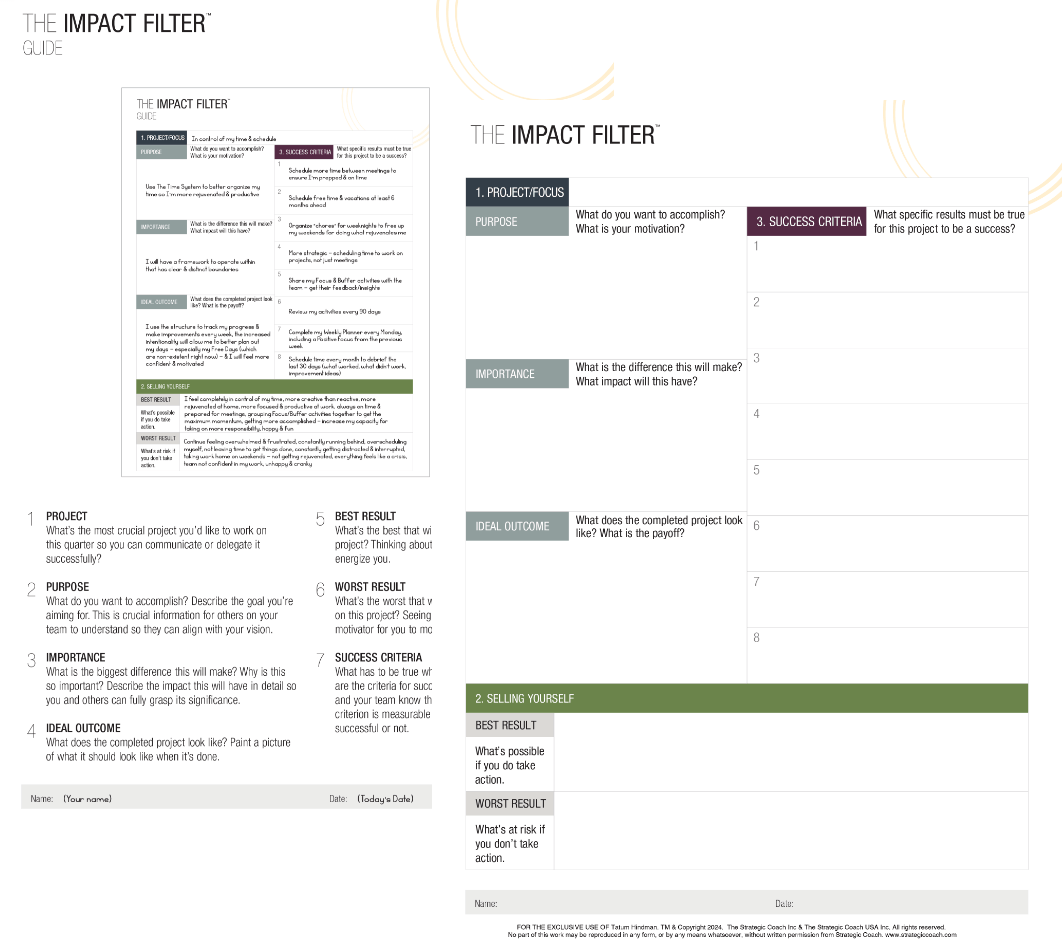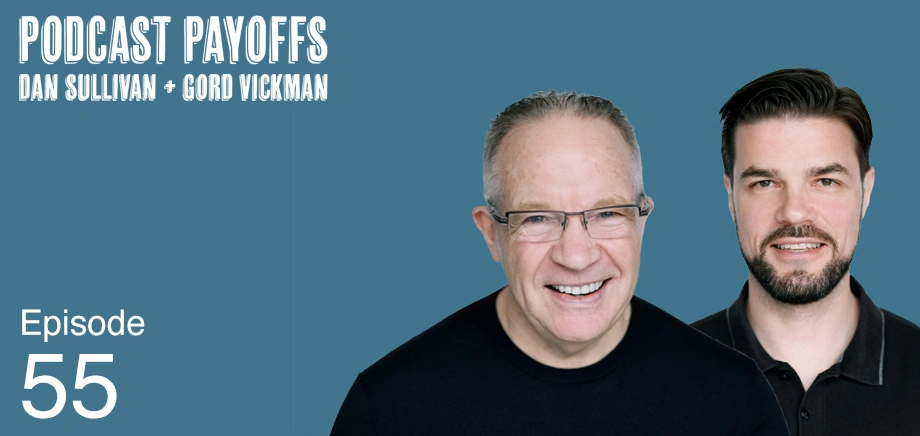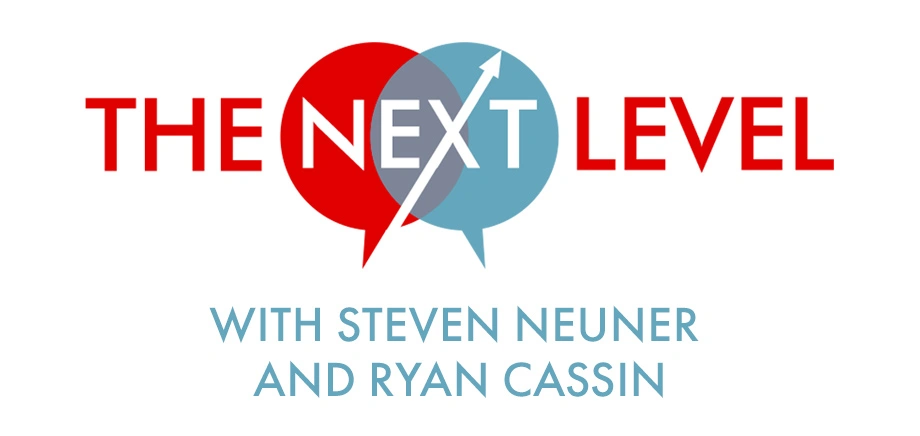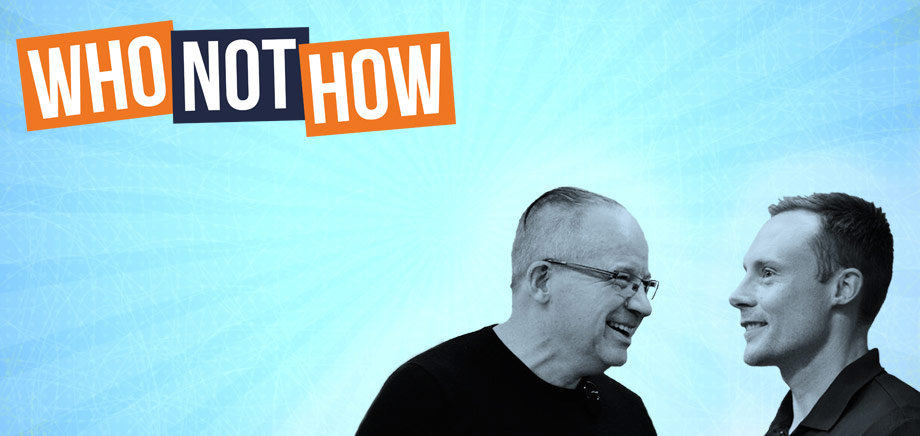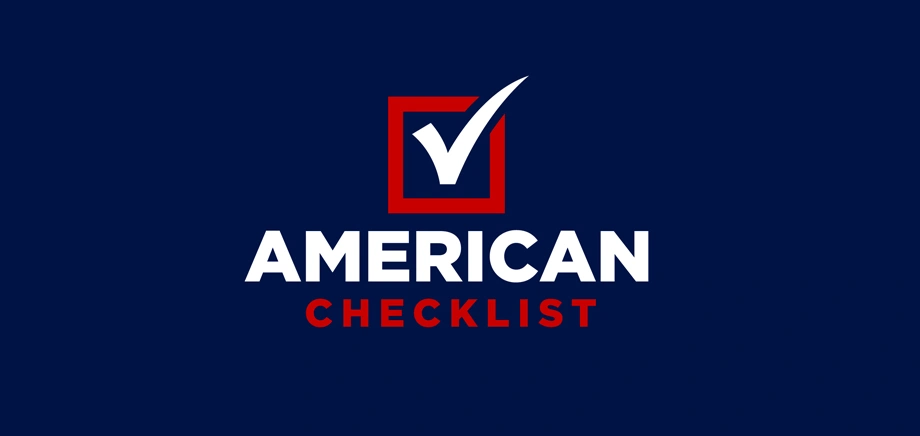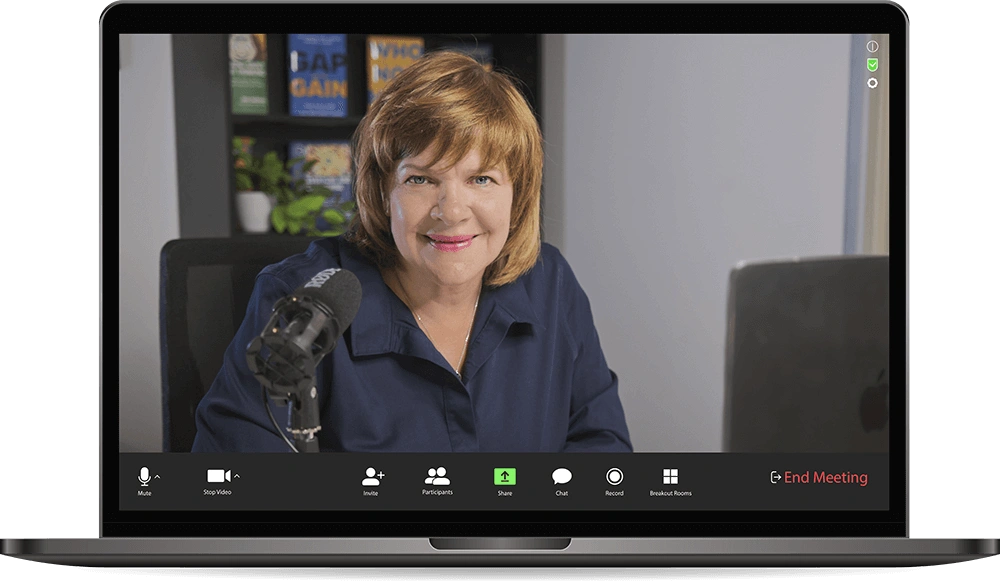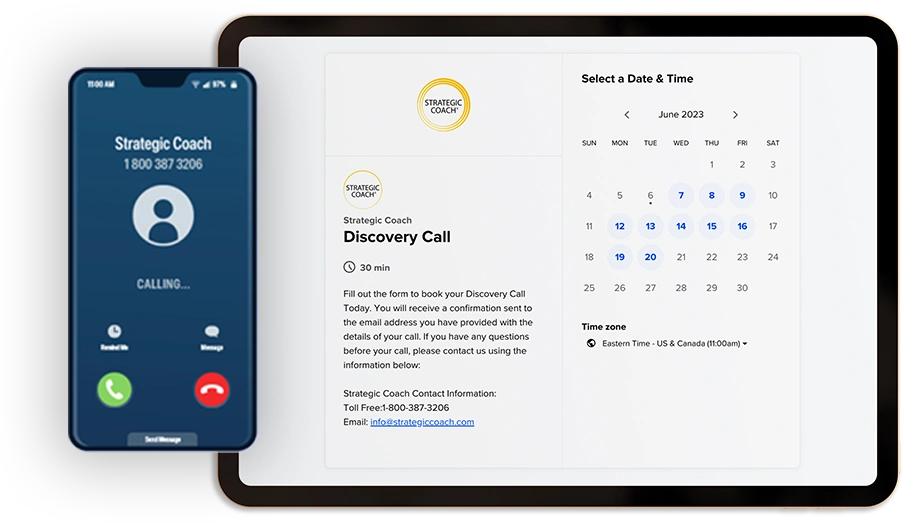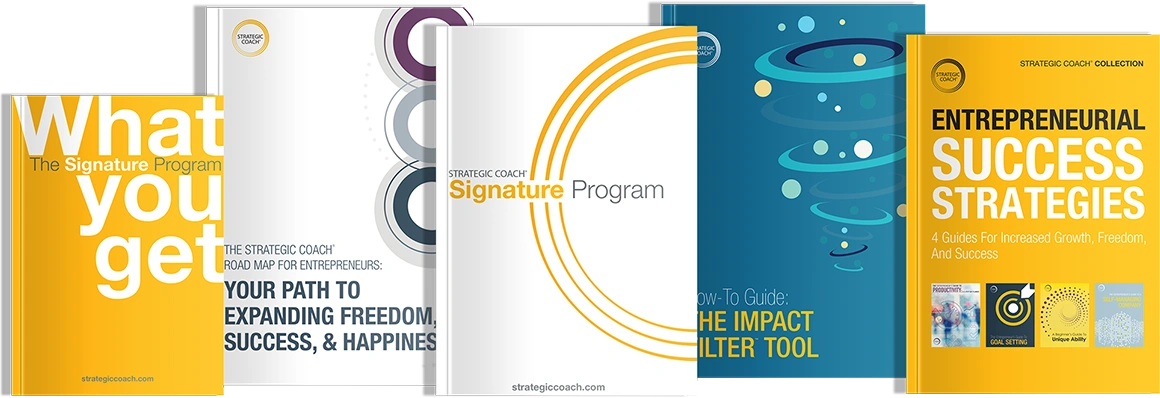The Slow Death Of Legacy Software, with Joe Stolte
May 28, 2024
Hosted By
 Dan Sullivan
Dan Sullivan
 Gord Vickman
Gord Vickman
Joe Stolte is the CEO and co-founder of Daily.ai, an innovative artificial intelligence newsletter that designs, writes, and tests itself to cater to user preferences. He shares with Dan and Gord the ways AI is “eating software”—posing an existential threat to huge software businesses like Google, yet creating exciting new opportunities for entrepreneurs.
In This Episode:
- Never before has a new technology been adopted as quickly and widely as AI.
- People are using AI passively without realizing it, but many are also quickly finding active, strategic, intentional uses for it.
- Investment in technology is often about placing bets rather than backing quality innovations.
- Entrepreneurs and venture capitalists are in a symbiotic relationship.
- Large software companies like Salesforce, HubSpot, and Google are having to shift their thinking around user experience.
- Thousands of talented tech workers have been laid off, which could lead to many simple, smart, easy-to-use innovations.
- Short-sighted, user-hostile thinking is an organizational culture cancer.
- News media being funded by subscriptions leads to giving subscribers only what they want to see, creating echo chambers and divisiveness.
- Strategies for growing an email newsletter: You can pay with your money or with your time—and either is fine. (Ads aren’t “dirty.”)
- “AI is like a really, really good intern: You wouldn't ship intern work to the marketplace.” —Joe Stolte
Resources:
Learn more about Joe Stolte and Daily.ai
Dan Sullivan’s AI newsletter is The Spark
The Innovator's Dilemma by Clayton Christensen
Peter Zeihan, author and geopolitical strategist
Episode Transcript
Gord Vickman: Welcome to the next episode of “Podcast Payoffs”. My name is Gord Vickman, with Dan Sullivan, and our second episode with Joe Stolte.
Joe, glad you're with us. Thanks so much for joining us and a little bit of a re-up for those who didn't catch the previous episode. Who are you and what do you do?
Joe Stolte: I am the CEO and co-founder of daily.ai, where we help entrepreneurs create AI automated email newsletters that get really good open rates and take less than five minutes of your time to do so.
Gord Vickman: That's a wonderful quick summary. And Joe, I had a thought earlier before when I knew that you were going to come on. When you're in it as thick as you are, and we've been working with you at Strategic Coach as well with Dan's newsletter, GetTheSpark.ai, you maybe might make these false assumptions that everyone knows about this and everyone's doing it and everyone's leveraging AI for content marketing.
And then I think to the things that I see. So Dan Sullivan, hot commodity on the podcast scene, there's a lot of folks that want to interview him. There's a lot of people that want to be on our podcast as well, Strategic Podcasts with an S, strategicpodcasts.com. And I find the lack of self-awareness is kind of staggering on occasion, because there's people that have coaching programs of their own that want to come on our podcasts to discuss their coaching programs. And it's baffling sometimes.
It's like if I brewed beer in my basement and I contact Budweiser to get on the Budweiser podcast to talk about my basement beer. They don't understand that we're doing something here and they're doing something, I guess, kind of similar, and then they give you a laundry list of all the things that they could talk about on your podcast. But it's just like a “Spray and Pray” approach. They're not really targeting you. They just want to get on your show.
So I'm thinking, okay, now my mind's going “We have, you know, audio-to-text and then searchability on that. What if there were an AI program that could actually go through the transcripts of podcasts, discover the keywords of people who are discussing the same types of things that you are, and then you could go and actively target those people to try and pitch yourself to be on that show.”
Now, that service doesn't exist yet. I just made that up in my own mind. But it's not what people are doing right now. So you still have—I'm getting somewhere with this—what percentage of the people are still using that “Spray and Pray” approach as opposed to those who are using much more targeted, intelligent AI solutions such as yours?
And how long do you think it will take to ooze over till we get to the majority who are doing it more intelligently using AI and the kinds of services that you offer at daily.ai?
Joe Stolte: Yeah, I think one model that you could use to approximate from a numbers perspective is, like, you can look at the parabola, the diffusion of technology, and you've got, I believe, it's the early adopters, like the late adopters, the late majority, et cetera.
Well, the early adopters is 13.5% of the bell-curve. It's the first chunk on the bottom left. And it's my hypothesis that we're still in the early adopters phase of AI. Although the rate of speed of adoption is certainly going up faster than any technology that I've seen.
And I was born in the 1980s, and I got to experience the world before the internet and after the internet, you know, before cell phones and after cell phones, and AI is the fastest-adopted technology that's the most enabling and disruptive that I've experienced ever, like full-stop, hands down.
And so I think that we'll get to the place where the majority of people are using it intentionally, much faster than any other technology. I'm wise enough not to make date predictions because I know that they're mostly going to be wrong and it's mostly a projection of my feelings and meanings on a thing. But I think you could actually look at it and see yourself—look how fast people are using it intentionally. I think that's the key differentiator, because we've all been using AI for a long time.
The washing machine that my family used last trip to Japan uses AI. Your Netflix that describes the next video to you uses AI. All the searches you're doing use AI. YouTube, to feed you the right videos, uses AI. Your phone, when you take a picture, takes like seven pictures and stitches one together using a form of AI. Android devices, when you take a picture of the moon and you take one on an iPhone, the Google phone actually shows you a beautiful, high-fidelity picture of the moon. Not because it has a better camera. The cameras are mostly the same. It's because they wrote an algorithm using AI to help you take better pictures of the moon.
So we're all already using AI. The question is, are you intentionally seeking out these new forms of AI to use them? That's an important distinction to make. And inside of that distinction, I think we're very much in the early innings, the 13.5% of humans using technology that are embracing things like the ChatGPTs, the DALL-E 3s, or the more sophisticated technologies that are making videos or cloning voices and these kinds of things.
Dan Sullivan: Yeah.
One of the things that I'm watching and regarding is the amount of investment going into AI, and actually it's dropped in the last quarter. And the reason is that they weren't betting on the technology, they were betting on the bet.
I often talk to Peter [Diamandis], you know, more and more I find Silicon Valley resembling, you know, that you get very excited about something and people are hyping something and say, “If you get in early on this investment, you're going to get a really—“ but it doesn't have anything to do with the technology itself. It has to do with the bet.
Would you say that you've experienced that?
Joe Stolte: A hundred percent. And unfortunately, unlike Las Vegas, where kind of the rules are the rules and there's chance, in this vacuum inside of Silicon Valley, if enough of us have enough confirmation bias that this is the bet, we can basically make it true, which is dangerous.
So you have this misallocation of capital to technologies that aren't even using the capital in the most meaningful ways to bring forth the best capabilities. And I think that that will be a problem for AI to solve here sooner than later. I don't think we're even coming close to looking at the right kind of surface area of factors to consider of where the capital should be employed.
And other things that I'll say is that the Silicon Valley venture capital ecosystem is in a symbiotic relationship with the entrepreneur. But the entrepreneur can exist without the venture capitalist, but the venture capitalist can't exist without the entrepreneur. So oftentimes the entrepreneur goes into the relationship with the venture capitalist with almost like a needy, beggar, tin-cup perspective, when in fact the entrepreneur is the rare and valuable catch and the essential component in the ecosystem and the venture capitalist on the other hand is not. And so that's not to demean what they're doing, it's just to point out the obvious supply-and-demand characteristics.
Dan Sullivan: Well, it's the nature of how the whole dynamic works. Yeah.
You mentioned on a previous conversation that we had, Joe, that the disappearance of software, you're just noticing.
Do you have a sense that the software companies—I'll pick Salesforce as an example—you know, I mean, and Salesforce has had their own AI program for as long as we've been involved with it. And we're a Salesforce organization. I mean every activity inside the company.
Would you say that they recognize this and they're moving closer and closer to giving you an AI experience with what is normally a fairly predictable experience you're going to have of interacting with their software?
Would you say that they're probably moving towards an AI-type of experience with their software? Some of them, not all of them.
Joe Stolte: I certainly think they're recognizing it. You know, some of the smartest people I know are at Salesforce, a really incredible company. Very early, their big bet was “Everything will be on the cloud”. And they were early with that, and they've done very well with that.
The challenge is, can they do anything about it? Because there's so much incumbent architecture and technology and human behavior.
Like the way the Salesforce machine works, the way any incumbent technology works is you've got a certain set of machinery and infrastructure that goes a certain way down a certain path, and it's almost like the groove in a record. If you've listened to a record for too long and the needle won't pop out of that part of the record.
So “Can they?” is the question that I think is interesting to ask. Can they do that? Can they do that through acquisition? Can they do that through culture change? Because it is a substantial shift.
I know that Salesforce has built some generative AI tools to help, for example, the completion of emails or responding to customers to make that better. And that's great. They should, because that's low-hanging fruit. I think that's a necessary thing that they should be doing to keep up. But are they building like advanced machine learning models that you can talk to like C-3P0, where they automatically stores all your customer data in the CRM and you don't ever have to see it, and it just knows?
I don't know, and I hope so, but if not there's a substantial business to be built just around that in CRM.
CRM is an interesting software you can literally just almost watch with like clockwork-like precision. You're going to have the old one, which was, let's say, whatever it was before Salesforce. They moved to the cloud and everyone's like, “Oh, go to the cloud.” Then a bunch of copycats come. And then you have a HubSpot who's like, “No, we're going to do it better. We have a better mousetrap, better follow-ups, better user experience, better customer acquisition, and we're going to go downstream to the mid-market.” And then you just keep going all the way down, all the way down, all the way down. And then today you have this company GoHighLevel, which I love what they're doing. And it's just a really simplified, easy-to-use piece of software that just gets the job done for a far, far, far lower cost than Salesforce or HubSpot or one of these bigger enterprise CRMs.
But I think all of them that are playing the software game are going to have to completely rethink the user experience with where we're going. So I don't know if they can.
“Can” is a byproduct of capability and courage. Like, do they know how, and are they willing to?
And there's something about Wall Street, when you're a public company, that locks your hands. The courage part gets neutered.
So I don't know. I hope they will, but I wonder if they can.
Dan Sullivan: Yeah, well, here's the thing that I think, that they're back in a nervous state, all the big tech companies right now.
I mean, for example, I'll take iPhone. You know, Apple is an 800-pound gorilla in the iPhone business. I mean, Samsung exceeded them, I think it was last week that Samsung has actually got more phones out there, but they're not making the profit margins, you know, with it. I mean, Apple has always gone after profit margins. You know, “This is how much it's going to cost.”
I was noticing over the last, I think it started in the fall of ‘22, that the big tech companies started massively laying off. I think the numbers is about 300,000 tech workers were laid off. And someone explained this to me and they said, “Well, they're laying off their 10-year project people.” And they were saying that the tech companies just gobble up talent just so that the other companies don't get the talent, and then they assign them—“We're going to put you on a 10-year project, something we're working on, 10-year project.”
But as money gets more expensive, they can't afford their 10-year projects and so they start moving down, that “We have to spend our money on our 18-month projects,” you know? So “Anybody over 18 months, we got to get rid of them right now. We'll hire back people when we get some cheap money.
My latest book is the MELT costs, that four things control society: The cost of money, the cost of energy, the cost of labor, and the cost of transportation. And we're in a very, very high-cost period. And if Peter Zeihan's predictions are, “We're going to be this way for the next couple decades.”
So my sense is that when they fired those 300,000 laid off 300,000, they engendered 300,000 potential competitors that are going to destroy them five years down the road or 10 years down the road. ‘Cause it happened right when ChatGPT happened.
Joe Stolte: Yeah, absolutely.
Dan Sullivan: Have you hired any people like that?
Joe Stolte: Yeah, absolutely. And we partner with them a lot as well. And that was a huge opportunity.
The same thing happened earlier in my career. You know, I was working in management consulting in the firm that I was with. I was in Seattle and, you know, Washington Mutual basically got acquired or folded. And there's a lot of very, very talented business analysts and strategists that worked at that bank. Well, all of a sudden, recruiting became really easy for the consulting firm. We doubled in size during that period because there's talent everywhere and that's a very talent-driven business. I would argue technology is similar in some regards.
So yeah, I think that as these things happen, as AI continues to make this push into all things, you can think about there's a really big venture capital firm called Andreessen Horowitz, A16Z, and they had a very famous thesis about a decade ago that was like, “Software is eating the world.” And so we're going to go invest in the software that's eating the world, right? Taking legacy things and making them software processes and experiences.
Well, I think AI is eating software. And I think that that's going to cause a lot of these companies to reevaluate their value in the world, to reevaluate how they think about staffing people. And it's really going to change the paradigm in a very, very serious way.
If you've ever read the book, The Innovator's Dilemma by Clayton Christensen, he used to be the Dean of Harvard Business School. That model, I think, is going to be very true now.
So all those people that got laid off are going to start technologies that are very, very, very good at one particular thing. And if they play their cards right, and they don't get acquired, then that one little thing starts to get more and more and more and more important and eat away. And you can look at OpenAI as a perfect example of that, right? They had this sort of low-cost innovation, and then, well, I don't know if it was low-cost, it's a substantial amount of capital to build that company, but what they commercialized was very simple. It was ChatGPT, it was a very simple thing.
Well, then all of a sudden, Google was like, “Wow, I can see how this eats our search business and clobbers us in all these different ways.” But, you know, in many respects, OpenAI is like a tiny little company. You know, then Microsoft said, “Aha, we see it, too.” So they came in and gave OpenAI an absorbent amount of capital, you know, incorporating their capabilities and technologies. And they said, “All right, Google, we're finally ready to get in the search ring with you, or at least get in the ring in a meaningful way.”
So it opens up all these interesting dynamics. But I think you're right. I think a lot of people are going to get I don't know, like laid off, let go. You could put it that way or you could put they're going to get reintroduced to their next best opportunity outside of their current opportunity fairly quickly. And I think inside of that, there'll be just loads of opportunity for everybody to create value if you're ambitious and you see a bigger future for yourself than you do for your past to use your paradigm, Dan.
Dan Sullivan: Yeah.
Gord Vickman: I wonder if Google saw no alternative because I'm thinking back—specific example here: Google killed their RSS reader. So your RSS reader would send content that you would curate for yourself. It would land on your desktop, and all the blogs and all the podcasts and the things that you wanted there would appear. OK, so there they go.
Google realized, “Oh, wait a second. If the RSS reader is just pulling this stuff for everyone, they're not going to Google to search for these things.”
Dan Sullivan: Well, they're not watching the ads.
Gord Vickman: Exactly. So if people are just having these things delivered to them based on their things that they've chosen to see, then they're not going to search for these things and they're not seeing the ads that people are paying us to show them. So Google just killed the reader.
So now Google, they're not stupid. They know that if you want to find anything out, going to Perplexity and asking it the questions, like Dan was saying, is way better than going to Google. It's going to give you reasonable answers. You can even ask it for links, but it's not showing you what people have paid Google to show you.
But I think we've maybe reached that point where Google is just like, “OK, it's not a good idea to have this, but we don't really have a choice here because we're going to get left in the dust if we don't not only keep up, but lead this.”
So if you were sitting in that boardroom, Joe, would that have been an awkward conversation when they say, “OK, we have to go, we have to do this?
Joe Stolte: Hmm. I think anytime as a business, no matter how big or small you are, when you stop leaning into the places that the marketplace finds value in and you start making decisions that serve yourself, that's short-sighted. Then that becomes permeated throughout your culture.
Dan Sullivan: You go blind, deaf, and dumb.
Joe Stolte: That's it. And so it's a slippery slope. Strategically, you may choose to do these things to sort of get a better position, but at what cost?
I think the real cost for Google, and I've never worked at Google. I worked at Microsoft. I have many dear friends that have worked at Google. One of my old business partners worked at Google. And my sense from the outside looking in—I haven't worked there, so take this with a grain of salt—is that Google's brakes that to their gas is their culture, which is so ironic because it was like a celebrated culture. You know, you could go to Google and there's like beanbags and free food and all this stuff like creative time and time to work on your own projects, which is fantastic. It gets all your creativity out.
And at some point that turned on its head. And the culture stopped being innovative, and it stopped being bold, and it stopped having the courage to do what the obvious thing the marketplace was asking for, and it opened the door for someone else to come in and eat their lunch.
Now, they're smart. They're very smart, and they have a lot of money. And with technology companies, the other thing they have is a lot of political influence and power. So they have tools that, let's say, the little guy doesn't have, but if they have blinded themselves to what the marketplace wants and have refused to give what the market wants in a way that the market wants it, then that is fundamentally putting out that innovation fire that made them so special. And then their days are numbered. They're just going to be in a moment with a long, slow death. So they have a lot of money, a lot of time, a lot of intelligence, a lot of power. There's plenty of opportunities for them to get this right and turn it around.
Dan Sullivan: But a lot of inertia too.
Joe Stolte: That's right. But I believe their inertia is in the wrong place. You know, God bless their CEO. He's got an incredibly difficult job. I would argue that he probably needs to be replaced or make some significant cultural changes for those guys to live on.
And I'm not saying that to pick on Google. I'm saying that because like, well, maybe you're not a Google, maybe you're an entrepreneur or business with less than a couple hundred employees. Guess what? Faster than you think, the same things gonna need to be true about what's going on in your business and the decisions that you need to make in the little things that, you know, “Faithful with little, faithful with much.” It's true for you as much as it's true for them.
There's a lot of lessons to be learned watching. Google. Used to be a fantastically creative, innovative company, and in many ways still is, but they've created this cancer that is definitely very visibly holding them back right now.
And so for me, I always ask myself—we have far less staff; we have like 30 people—“Where are we creating cultural cancer that's not serving the market and it's serving us instead?”
Dan Sullivan: Yeah, but it's not been apparent to me that they've been very creative for quite a long time now. And I think the reason is the ad dollars dictated their future. They're no longer a technology company, they're an advertising platform. And it changed the politics.
My thesis on the polarization in the United States is all a function of advertising dollars. I was always a New York Times reader, you know, but the actual physical paper got thinner and thinner. They weren't getting the ads. So they had to go to a subscription model, and therefore they had certain subscribers who were on one side of the political spectrum that had more influence than just people picking up the newspaper and maybe reading it once or twice.
Well, they used to make their money on the unpredictable reader who would just pick it up, they'd read the ads and everything else, but they had to go to the far left with their subscription, and they have to reflect in their news and commentary, they have to reflect what their subscriber base now.
So I don't think it's a function that the politics of the United States have gotten polarized. I think the media has become polarized, and it's because of Facebook and Google. It was just, they got their money taken away from you.
Joe Stolte: Yeah. You know, this is a little bit of a rabbit hole, but there was definitely—I shouldn’t say “definitely”—it seems to me that there was an observable cultural shift that took place, I don't know, beginning in the Sixties and Seventies, but didn't stop in the Eighties or the Nineties or the 2000s, where the colleges that were putting out the middle management executives that are now running, basically, the world, the newspapers, the biggest companies, started to get a different set of values. The values were different. You know, it shifted materially from, let's say, you know, like “God, country, guns, loyalty,” to like “equality, justice,” and a whole different set of value systems.
And without passing judgment on those value systems, I think it's worthwhile to step back and say, “What's the most useful value system for society and culture and, you know, the things that we value?” And I don't know, I think we're kind of in this weird in-between phase where, you know, I don't think that like, for example, the new value system is probably the fastest-growing, but it hasn't totally taken everything over, but it doesn't quite have its thesis right. And it's not totally as useful as let's say the one that we just came out of.
And so I think there's some underlying structural thing that happened there as well, but it was exacerbated by technology. It was exacerbated by the media. And to your point about the New York Times or any newspaper, it's interesting that a—I just find it funny that the company or an organization, a group of humans, it's kind of like coming together to sort of collect and report out the truth ends up taking a very interesting perspective on the truth and the knock-on consequences of that. Regardless of what side of the aisle you're on, I think that's something that's been lost is this real kind of multi-perspectival “What's really going on here.” It's like, “No, I want to see the world through my filter and my lens, and I'm going to talk to the people that see it through my filter and my lens, and we'll talk loud enough.” And of course, “We're right and everyone else is wrong.”
That's, I think, a pretty dangerous place to be.
Dan Sullivan: Yeah, I think it's advertising dollars.
Gord Vickman: It’s speed, too.
Dan Sullivan: Anyway, I got a question about the newsletter, the AI newsletter.
So we've grown, we started off with just about 200 subscribers, and we've gone to over 2,000. So we're up 10 times. But this has been totally passive on our part. We've simply relied on one subscriber referring it to their friends, okay? And I think it accounts for the high open-rate that they're referring to people who are probably like-minded.
But how do we go proactive now with the increase of the subscriber base?
I mean, the numbers will probably go down if we start putting quantity into the contact list, but it's proven itself that a lot of people find it incredibly valuable. Our rates are, I think we're up to about 20, 21 issues that we've sent out, and I think we're doing about 82% open-rate for the average. We get a nice little 90 every once in a while, feels really, really good, but I think we've proven the case that people want to read this. We've got the style of it down, we've got the graphics of it down, and everything else.
Now, how do we go from passive to proactive in growing the base?
Joe Stolte: Yeah, absolutely.
So first of all, the fact that you guys have an 80% average open-rate is—we can't take too much credit. It's because you guys have amazing content, and you listen to the market, and you have really good resonance and relationship with your audience that you brought to the party.
So, you know, I like to joke that if your subscribers don't want to hear from you, like zero interest times our multiplier is still zero. But if you've got a really good interest, you know, we can help magnify that with technology and make sure we're getting them more of what they want.
But how do you go on offense to grow a subscriber list? Right? Like, that's a question that we get a lot from our customers. And that's a question that we've explored a lot as a company. And I can tell you what we've learned and what we've done to grow our list.
So when I went out before we launched this to the public, I interviewed a bunch of the people that have grown the biggest newsletters in the world, right? Subscriber bases and all that. And I asked them, you know, “How did you grow your list?”
It's probably not the answer that most people want to hear, but the 80-20 for most of the list-growth is actually just buying ads. So instead of buying ads like a lead magnet, buy ads to your newsletter. And then a large component of people stick around and some don't, and then you optimize from there.
For those that don't want to buy ads, because that's complex and can be a little bit annoying, the main philosophy that I'll just say is, like, get it out of obscurity. Like, put it in your email signature. Put it at the end of your podcast, not the beginning. Put a little ad at the end, because those are your most engaged readers. They want to go deeper with you. So, hey, thanks for watching today's episode. Go get my newsletter. Here's the benefits. See you on the next episode.
Like, that little thing is an awesome breadcrumb for your most engaged people to go find the newsletter to have a better experience with you. Put it in your social, talk about it from stage.
Don't be afraid to talk about it. It's actually pretty straightforward. Put it into the things in front of your marketplace where you're already talking about it and give people an opportunity to vote with their feet.
What it doesn't do, it doesn't grow itself. There's no hole-in-one “viral mechanism” that's going to make it grow overnight… yet. We've built in some really good features that help make it easier for people to share the content, and that happens frequently. But their recommendation of it will pale in comparison to you saying, “We think this is great, you should check it out,” because you're the authority, you're the company, you're the brand.
So just at a very basic level, putting it in public places where people can engage it is actually the short answer.
But, yeah, I mean, buying ad-
Dan Sullivan: Well, I think we have a more focused opportunity here.
So this year, we'll put 1,000 new people into the Program. So we'll have 1,000 new sign-ups during this year, but that would probably represent 10,000 interesting leads. All of our leads get asked the R-Factor Question. And the books are driving the leads. The three books are really driving the leads. And they're educating before people come into the Program.
So more and more, I'm visiting with first-year workshops. In the last month, I've been in five people who are in the first year of the Program. And they have a knowledge level of Coach and its concepts that you used to not find in the third year of the Program.
Gord Vickman: They've been marinated.
Dan Sullivan: Yeah, they're already marinated before they come in for workshop one. They're asking about concepts that are three years in the future, which is good.
So my sense is that we could start with people who are really close to the edge of a decision to join Coach. You know, I'll just talk to our membership advisors, they're the ones who are doing it, that we could just say, “Let's do 500 in the next issue with a personal letter.” I could do a video, you know, the video could go out from me and say just, “Thanks for your interest. And just as a reward for being interested in us, we'd like to send you our AI newsletter.”
Joe Stolte: Yeah, exactly. That's a perfect example of where are you already interacting with your marketplace? And how can you make it easy for them to find out about what this is? And they can vote with their feet. They can raise their hand to be a part of it.
I can tell you what doesn't work. What doesn't work is taking people that aren’t interested and just, like, rapid-firing it to them and praying that some of them stick. People come to us and that's what they think that you're supposed to do. And that's just like a low, low-quality way to grow your list.
But I do think that just be able to give people an opportunity to raise their hand and showing them in more ways, like, “Hey here's how you can interact with it. Here's how you can subscribe to it, and here's what it is, and here's why it's great, and if you like it, fantastic, here's what to do next. And if not, no big deal.”
But I think, like in the last episode we were talking about “the soup”, which might be akin to the sales cycle. I like to think about people that haven't bought from me: There's a graph, and the more they go up and to the right is proportionate to how much of my content they've consumed or my company's content they've consumed. And the more that they consume before they talk to me or buy from me, the higher the trust factor is. They're in the soup deeper.
So I think finding ways for people that are already in, let's say, that journey, which we'll just keep calling “the soup”, because that's fun, to have this experience over the newsletter is really powerful, or could be really powerful to give them more data-points on you and brand and the things that you think are valuable. It's really, really easy.
If you had to have a team cobble this all together, there might be enough effort for me to be like, “I don't know, maybe weigh this against other things.” But with the technology, it's really easy. I don't mean to be self-aggrandizing and promote our stuff, but we make it super-simple.
Dan Sullivan: No, no. I would talk about you when I do it.
But the whole point is that there was an issue, I think it was either last time. We didn't grow at all, but we just kept the number we had in the previous issue. And it's based, and there was a 96% open-rate. So, you know, you're getting a good return.
But, you know, I mean, that was very flattering that we have a 96% open-rate, but I would be happy with a 60% open-rate with 20,000 subscribers.
Joe Stolte: Yeah, a hundred percent.
Well, you know, you miss a hundred percent of the shots you don't take. So, you know, make more offers.
Wherever people are having a journey with Coach or in anybody else that's listening to this with your company, whether you have a newsletter with us or not, like make the newsletter, bring it to their awareness: “Cool, well, you've got the new free book of the month or the free chapter. If you like this content, we actually make a newsletter where you get stuff like this every week and it's our gift to you. It's free. Click here to subscribe.” That could be at the end of the thank-you page.
The other thing, too, is we found with more and more of our customers, and we found this true of people that have newsletters even outside of our platform, is instead of buying ads to a lead magnet, like, “Hey, get a free thing,” it's, you know, buy ads to the newsletter, the cost to acquire an engaged subscriber is actually lower, and they get more value because you get that PDF or the free thing, and it's awesome. But they may not come back to it. But the newsletter proactively keeps showing up with value every day or every week. And so it's much better, like the amount of value the person gets versus the cost you have to pay to give it to them is more in your favor.
So even if you have a newsletter, I would consider buying traffic. Like we work with Joe Polish. They buy traffic to their newsletter and it grows by, I don't want to put his numbers out there, but it grows every week, you know, and it's not from his existing audience. It's from other people that maybe haven't heard of him and they get to have this new experience with him.
Gord Vickman: It's funny you mentioned ads. It's sort of like a dirty thing people talk about now. Maybe people sheepishly say, “Oh, we bought ads.”
So just recently, there's a podcaster, Jordan Harbinger, got a huge, massive show. He jumped back on LinkedIn. He hadn't been engaging for a long time. And he said, “You know, I'm back here because I just want to answer a few questions. People have been asking me, how did you grow your show to this you know, enormous beast that it is. They're asking, did it use AI? Did you do this? And they're asking for all these tricks.”
He goes, “Guys, I spent millions of dollars of my own money buying ads on shows that talk about similar things to mine.”
It's like mic-drop. You know what I mean? And sometimes that's what it comes down to. He's just like, “I spent millions of my own dollars. There's no trick. There's no screwy anything. There's no magic bullet. It's just, I spent millions of dollars.”
And then he probably logged out and people were like, “Oh boy. Wow. It's—“
Yeah, sometimes it is that simple. Just invest millions of dollars and you can expect a bump.
Dan Sullivan: Yeah.
Okay, we're approaching the end of this particular podcast. Any new ideas that came out of our conversation today?
Joe Stolte: Yeah, it is actually related to the last topic: I think if you have more time than money, then you can use that time to be creative. So instead of paying to be on podcasts, you can go knock on doors, build relationships and get on podcasts that way and get placed and find your audience.
If you have more money than you have time, then you can hire people to buy traffic for you and get there a little bit faster with a little bit more money. And I think that, like, a lot of times people don't know that that's true.
So if your business is in a place where you have money and you aren't using that to accelerate, you should consider doing that. And vice versa, if you're just getting started or your margins aren't right or you're not quite there, then you can use your creativity, time, and ingenuity to get the results that you want. And I think that with AI, we're going to be able to use a lot more new technologies that are cheap or free to do a lot more interesting things that even paid ads can't do for you.
So it's a wonderful, wonderful time to be an entrepreneur. A lot of opportunity.
Dan Sullivan: Just watching since November 30th, 2022, when ChatGPT came about, what has surprised you most about your own use of AI? Joe Stolte: Mm. I used to pride myself on isolating myself from technology to get my most creative output. And that's totally inverse now. Everything starts with AI. It's my creative thought partner. And then I'll go through my offline creative process and come back and I'll ask it, “Hey, if this is my outcome and this is the context, what are five ways that this is a bad idea or could fail or that I can make it better?”
So I’ve got this sandwich method now where it's just become the beginning of my journey and the end of my journey for anything creative that I make.
I used to think that like human creativity was almost like a spiritual, like a thing that you receive. And I do think that there's some element to that, and that AI was never going to be creative. But I do think that AI has really surprised me as how much of a creative thought partner it's become. I don't think it uses the same kind of sources that channel creativity that I do. But man, has it been this massive accelerant for just being a creative thought partner in a really cool way.
So yeah, for me, I use it to start most creative things and to end most creative things, to go faster, get better ideas, and to sharpen it up before I push it out into the world.
Dan Sullivan: Maybe AI is spiritual.
Joe Stolte: Yeah, it's quite possibly.
Gord Vickman: The way that I've always compartmentalized it in my head is AI will be the car wash, but I have to put the wax on myself.
Joe Stolte: Yeah, for now.
Gord Vickman: And it's a hell of a wash. But you got to put the wax on yourself, because AI will never replace my voice because unless it's cloned, and I'm sure I mean, literally, it probably could in a few years, if not already. But it's still my output, right? AI helped me plan these podcasts today. But the human sweep actually went through it, and there were things that came on here that I'm like, “No, we're not going to talk about that.” So it was my creative partner and I always start with it. So that's the wash. And then I put the wax on myself. And if there's a right way and a wrong way to use it, some people may disagree. I think that's the right way to use it. Allow it to be a creative partner for you. Allow it to give you those starters. Allow it to give you sort of that push on the swing. But then once you're swinging, pump those legs and you can keep going for as long as you want.
Joe Stolte: Well, over a long enough timeframe, Gord, I think the words ‘AI’ and ‘never’ are a dangerous combination.
Gord Vickman: I corrected myself there before AI sends attack drones to show me who's boss.
Joe Stolte: AI is like a really, really good intern: You wouldn't ship intern work to the marketplace. You always want someone more up the experience curve with better intuition to look at it, review it, make it better. So it's just, that's the way I look at it. It's a phenomenal intern with a great memory. But I need to make it better.
Dan Sullivan: I think the other thing is that humans are getting smarter, too. So I think it's a combination that things are getting smarter on both sides.
I mean, I can still tell if something's been written by AI. There's just a flatness to it. I pick up that if there's a human there, there's an emotionality that I notice.
So, we've been dealing with technology since the caveman. This is the thing that changes everything, but there isn't one thing that changes everything. It's that everything that comes along is constantly changing everything.
So, I have a book coming up that's called Timeless Technology, and that the eight characteristics of technology for 100,000 years, there's eight characteristics. So and this is what technology always does. It's got a pattern to it.
So anyway, Joe, real pleasure. And we'll want to check back in in future episodes.
Joe Stolte: Yeah. Thank you so much for having me, Dan. Thanks for having me, Gord. This has been great.
Gord Vickman: Where can people find out more about you?
Joe Stolte: Best way to find out about me is to go to daily.ai or you can find me on Instagram, JoeStolteLive.
Gord Vickman: Thanks so much, Joe.
Joe Stolte: Yeah, thanks.
Related Content
The Impact Filter
Dan Sullivan’s #1 Thinking Tool
Are you tired of feeling overwhelmed by your goals? The Impact Filter™ is a powerful planning tool that can help you find clarity and focus. It’s a thinking process that filters out everything except the impact you want to have, and it’s the same tool that Dan Sullivan uses in every meeting.
